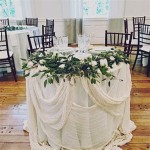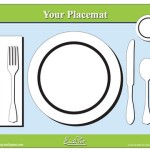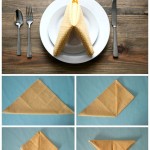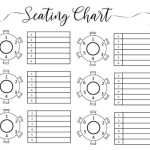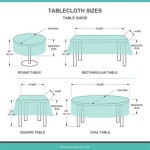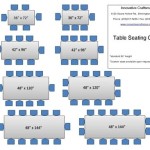How to Make a Small Dining Room Table
Creating a dining room table, particularly one designed for a small space, is a fulfilling woodworking project. A well-crafted, small dining table can significantly enhance the functionality and aesthetic appeal of a compact dining area. This article details the process of constructing a small dining room table, covering material selection, design considerations, construction steps, and finishing techniques.
Planning and Design Considerations
Before commencing construction, careful planning and design are crucial. The dimensions of the dining room table are paramount, particularly considering the limited space. Measure the available area precisely, allowing sufficient room for chairs and movement around the table. A common guideline is to provide at least 30 inches of clearance between the table edge and any walls or other furniture. This ensures comfortable seating and passage.
The shape of the table is another important design consideration. Round or oval tables are often favored for small spaces as they allow for easier movement around the table and can accommodate more people than a rectangular table of similar size. Square tables offer a contemporary look and are suitable for smaller, intimate dining settings. Rectangular tables, while generally requiring more space, can be efficient if one long side is placed against a wall.
The height of the table is typically standardized at around 30 inches. However, adjustments can be made depending on the height of the chairs being used and the preferences of the users. Ensure that there is ample legroom beneath the table; a minimum of 24 inches is recommended.
The design should also consider the overall aesthetic of the dining room. The table's style should complement the existing décor. Options range from simple, minimalist designs to more elaborate, traditional styles. The chosen style will influence the materials used, the construction techniques, and the finishing process.
A scaled drawing or a 3D model of the proposed table is highly recommended. This helps visualize the final product and identify any potential design flaws or construction challenges. The drawing should include precise measurements of all components, including the tabletop, legs, and any aprons or supports.
Material Selection
The choice of materials significantly impacts the durability, appearance, and cost of the dining room table. Hardwoods are generally preferred for their strength and aesthetic qualities. Common hardwood choices include maple, oak, cherry, walnut, and birch. Softwoods, such as pine, can be used for a more rustic look or to reduce costs, but they are more susceptible to dents and scratches.
The tabletop material should be selected based on its durability and aesthetic appeal. Solid wood offers a classic look and can be refinished multiple times, extending the table's lifespan. However, solid wood is susceptible to expansion and contraction due to changes in humidity, which can lead to warping or cracking. Engineered wood products, such as plywood or MDF (Medium-Density Fiberboard), offer greater stability and are less prone to warping. These materials can be veneered with hardwood to achieve the desired aesthetic.
The table legs can be made from the same material as the tabletop or from a contrasting wood. Metal legs are also a popular option, providing a modern and industrial look. The design of the legs should be chosen to complement the overall style of the table. Simple, straight legs are suitable for minimalist designs, while more ornate, turned legs can enhance a traditional style.
For attaching the legs to the tabletop, consider using metal brackets or wood screws. Metal brackets provide a strong and secure connection, while wood screws are a more traditional option. Ensure that the screws are of sufficient length and diameter to provide adequate holding power.
When selecting materials, prioritize sustainability and responsible sourcing. Look for wood that is certified by the Forest Stewardship Council (FSC), which ensures that the wood comes from sustainably managed forests. This helps minimize the environmental impact of the project.
Construction Process
The construction process involves several stages, each requiring careful attention to detail. Start by preparing the materials, ensuring that they are cut to the correct dimensions and properly squared. A table saw or circular saw can be used to cut the wood, and a hand plane or jointer can be used to square the edges.
The tabletop can be constructed from a single piece of wood or from multiple boards joined together. If using multiple boards, ensure that they are properly aligned and glued together using wood glue. Clamps should be used to apply even pressure while the glue dries. Once the glue is dry, the tabletop can be sanded smooth using progressively finer grits of sandpaper.
The table legs can be attached to the tabletop using various methods. One common method is to use aprons, which are pieces of wood that connect the legs to the underside of the tabletop. The aprons are typically attached to the legs using mortise and tenon joints or dowel joints. The aprons are then attached to the tabletop using screws or metal brackets.
Another method for attaching the legs is to use metal brackets. The brackets are attached to the underside of the tabletop and to the legs using screws. This method is relatively simple and provides a strong and secure connection. However, the brackets may be visible, so it is important to choose brackets that complement the overall style of the table.
Once the legs are attached, the table should be carefully inspected for any imperfections. Any gaps or uneven surfaces should be filled with wood filler and sanded smooth. The entire table should then be sanded again to prepare it for finishing.
Consider adding cross braces between the legs for increased stability, especially for larger tables. These can be attached with screws and glue, providing additional support and preventing the table from wobbling.
Finishing Techniques
The finishing process enhances the appearance of the table and protects it from wear and tear. The choice of finish depends on the type of wood used, the desired aesthetic, and the level of protection required.
A clear finish allows the natural beauty of the wood to shine through. Options include varnish, lacquer, and polyurethane. Varnish provides a durable and water-resistant finish, while lacquer offers a smooth and glossy surface. Polyurethane is a versatile finish that provides excellent protection against scratches and stains.
Staining the wood can enhance the grain and add color. Choose a stain that complements the overall aesthetic of the dining room. Apply the stain evenly using a brush or cloth, and wipe off any excess stain. Allow the stain to dry completely before applying a clear finish.
Painting the table can provide a more contemporary look. Choose a paint that is specifically designed for wood furniture. Apply multiple coats of paint, allowing each coat to dry completely before applying the next. Sand lightly between coats to ensure a smooth finish.
When applying any finish, work in a well-ventilated area and wear appropriate personal protective equipment, such as gloves and a respirator. Follow the manufacturer's instructions carefully to ensure the best results.
Consider applying a sealant or primer before the final finish for better adhesion and a smoother surface. This is especially important for porous woods or when using paint.
Additional Design Elements and Functionality
Beyond the fundamental construction, several additional design elements can enhance the functionality and aesthetic appeal of a small dining room table.
Drop-leaf tables offer exceptional versatility for small spaces. These tables feature hinged leaves that can be folded down to reduce the table's size when not in use. When needed, the leaves can be easily raised to expand the table surface for accommodating more diners or for use as a workspace. The hinges must be robust and well-aligned to ensure smooth and reliable operation.
Foldable tables provide another space-saving solution. These tables can be completely folded and stored away when not needed, freeing up valuable floor space. The folding mechanism should be sturdy and easy to operate. Consider using high-quality hinges and latches to ensure the table's stability and longevity.
Tables with built-in storage can maximize the functionality of a small dining room. Drawers or shelves can be incorporated into the table's design to provide convenient storage for placemats, napkins, cutlery, or other dining essentials. The storage compartments should be easily accessible and designed to complement the table's overall aesthetic.
Consider incorporating cable management solutions if the table will be used as a multi-purpose surface, such as a workspace. Grommets or channels can be integrated into the tabletop to route cables and cords, keeping the surface clutter-free. This is particularly useful for small apartments or studios where space is limited.
Incorporate a Lazy Susan into the center of the table to facilitate easy sharing during meal times. This rotating tray allows everyone to access dishes without having to reach across the table, making it ideal for communal dining. Lazy Susans are available in various sizes and materials, allowing for customization to match the table's design.

13 Awesome Diy Dining Tables For Small Spaces Ohmeohmy Blog

13 Awesome Diy Dining Tables For Small Spaces Ohmeohmy Blog

25 Diy Dining Tables Bob Vila

13 Clever Design Tricks To Make Any Small Dining Room More Functional Table Decor

20 Gorgeous Diy Dining Table Ideas And Plans The House Of Wood

10 Diy Dining Table Ideas Build Your Own Room

13 Small Dining Room Ideas And Decorating Tricks

13 Awesome Diy Dining Tables For Small Spaces Ohmeohmy Blog

25 Diy Dining Tables Bob Vila

22 Diy Dining Table Makeover Ideas For 2024
Related Posts

